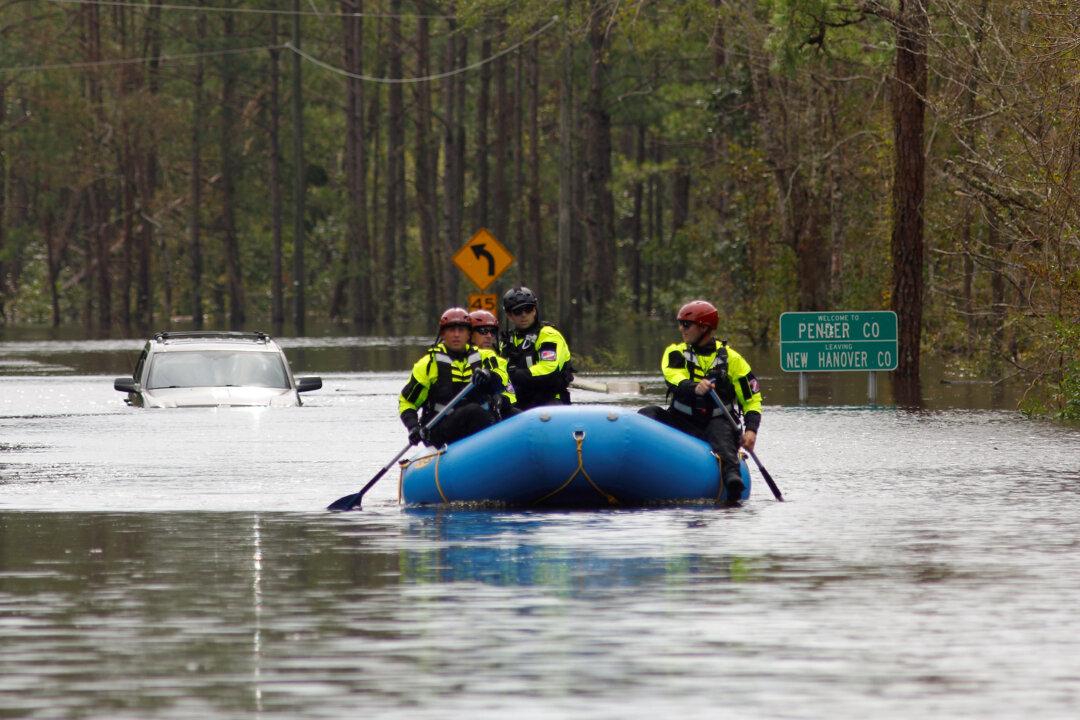WILMINGTON/FAYETTEVILLE, N.C.—Deeper flooding loomed in the hours and days ahead from rivers in the Carolinas swollen by Tropical Depression Florence, which has killed 23 people, even if rain-weary residents got a brief glimpse of sunshine on Sept. 17.
The slow-moving storm, a hurricane when it hit the North Carolina coast, has dumped up to 36 inches of rain on the state since Sept. 13, displacing thousands. The flooding could persist for several weeks in some areas.





